The world's 100 most threatened species
The World's 100 most threatened species[1] is a compilation of the most threatened animals, plants, and fungi in the world. It was the result of a collaboration between over 8,000 scientists from the International Union for Conservation of Nature Species Survival Commission (IUCN SSC), along with the Zoological Society of London.[2] The report was published by the Zoological Society of London in 2012 as the book, Priceless or Worthless?[3]

While all the species on the list are threatened with extinction, the scientists who chose them had another criterion: all the species have no obvious benefit for humans and therefore humans have no vested interests trying to save them. Iconic and charismatic species, such as tigers and pandas—along with economically important species—have many defenders, while these apparently "worthless" species had none. The title of the report, "Priceless or Worthless?", is based on that shared quality of the species.[4] The report's co-author, Ellen Butcher, stated one of the guiding principles of the list, "If we take immediate action we can give them a fighting chance for survival. But this requires society to support the moral and ethical position that all species have an inherent right to exist."[1][5]
The report was released in Jeju, South Korea, on September 11, 2012, at the quadrennial meeting of IUCN, the World Conservation Congress. At the Congress, it was reported that scientists are finding it more and more common to have to justify funding for protection of species by showing what the human benefits would be. Jonathan Baillie, of the Zoological Society of London and co-author of the report, stated that, "The donor community and conservation movement are increasingly leaning towards a 'what can nature do for us?' approach, where species and wild habitats are valued and prioritised according to these services they provided for people. This has made it increasingly difficult for conservationists to protect the most threatened species on the planet."[4]
Some of the threatened species are down to only a handful of surviving members. Santa Catarina’s guinea pig, native to a single island in Brazil, is down to its last 40–60 individuals, reduced by hunting and habitat disturbance. The great Indian bustard is threatened by habitat loss resulting from agriculture and human development, and is down to the last 50–249 individuals.[6] Elaeocarpus bojeri, a flowering plant found only on the island of Mauritius, has fewer than 10 surviving individuals, because of loss of habitat. The Baishan fir (Abies beshanzuensis), native to China, is down to five surviving mature individuals. Priceless or Worthless? describes the threats that each species is facing, along with measures that would aid their survival.[3]
Species list
| Species | Common name | Type | Image | Location(s) | Estimated population | Threats |
|---|---|---|---|---|---|---|
| Abies beshanzuensis | Baishan fir | Plant (Tree) | Baishanzu Mountain, Zhejiang, China | Five mature individuals |
| |
| Actinote zikani | Insect (butterfly) | Near São Paulo, Atlantic forest, Brazil | Unknown |
| ||
| Aipysurus foliosquama | Leaf scaled sea-snake | Reptile | Ashmore Reef and Hibernia Reef, Timor Sea | Unknown |
| |
| Amanipodagrion gilliesi | Amani flatwing | Insect (damselfly) | Amani-Sigi Forest, Usamabara Mountains, Tanzania | < 500 individuals |
| |
| Anisolabis seychellensis | Insect | Morne Blanc, Mahé island, Seychelles | Unknown |
| ||
| Antilophia bokermanni | Araripe manakin | Bird | _on_nest.jpg) |
Chapado do Araripe, South Ceará, Brazil | 779 individuals |
|
| Aphanius transgrediens | Aci Göl toothcarp | Fish | south-eastern shore of former Lake Aci, Turkey | few hundred pairs |
| |
| Aproteles bulmerae | Bulmer’s fruit bat | Mammal | Luplupwintern Cave, Western Province, Papua New Guinea | 150 |
| |
| Ardea insignis | White bellied heron | Bird | Bhutan, North East India and Myanmar | 70–400 individuals |
| |
| Ardeotis nigriceps | Great Indian bustard | Bird | 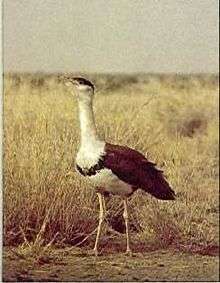 |
Rajasthan, Gujarat, Maharashtra, Andhra Pradesh, Karnataka and Madhya, India | 50–249 mature individuals |
|
| Astrochelys yniphora | Ploughshare tortoise | Reptile | 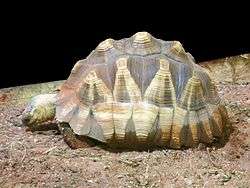 |
Baly Bay region, northwestern Madagascar | 440–770 |
|
| Atelopus balios | Rio Pescado stubfoot toad | Amphibian | Azuay, Cañar and Guyas provinces, south-western Ecuador | Unknown | ||
| Aythya innotata | Madagascar pochard | Bird | 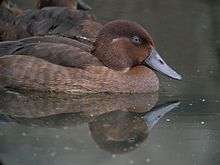 |
volcanic lakes north of Bealanana, Madagascar | 80 mature individuals |
|
| Azurina eupalama | Galapagos damsel fish | Fish | 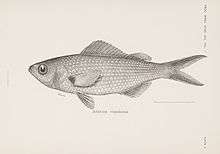 |
Unknown | Unknown |
|
| Bahaba taipingensis | Giant yellow croaker | Fish | Chinese coast from Yangtze River, China to Hong Kong | Unknown |
| |
| Batagur baska | Common batagur | Reptile (turtle) |  |
Bangladesh, Cambodia, India, Indonesia and Malaysia | Unknown |
|
| Bazzania bhutanica | Plant | Budini and Lafeti Khola, Bhutan | 2 sub-populations |
| ||
| Beatragus hunteri | Hirola | Mammal (antelope) | 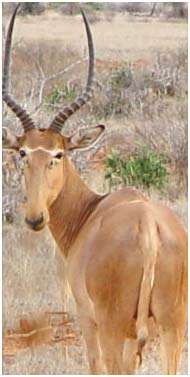 |
South-east Kenya and possibly south-west Somalia | < 1,000 individuals |
|
| Bombus franklini | Franklin’s bumblebee | Insect (bee) | Oregon and California | Unknown |
| |
| Brachyteles hypoxanthus | Northern muriqui Woolly spider monkey |
Mammal (primate) | 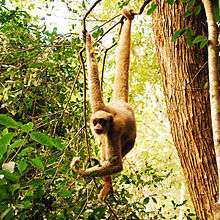 |
Atlantic forest, south-eastern Brazil | < 1,000 |
|
| Bradypus pygmaeus | Pygmy three-toed sloth | Mammal | Isla Escudo de Veraguas, Panama | < 500 |
| |
| Callitriche pulchra | Plant (freshwater) | pool on Gavdos, Greece | Unknown |
| ||
| Calumma tarzan | Tarzan’s chameleon | Reptile | Anosibe An’Ala region, eastern Madagascar | < 100 |
| |
| Cavia intermedia | Santa Catarina’s guinea pig | Mammal (rodent) | Moleques do Sul Island, Santa Catarina, Brazil | 40–60 |
| |
| Cercopithecus roloway | Roloway guenon | Mammal (primate) | 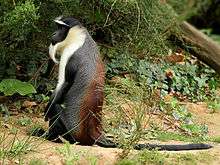 |
Côte d'Ivoire | Unknown |
|
| Coleura seychellensis | Seychelles sheath-tailed bat | Mammal (bat) | Two small caves on Silhouette and Mahé, Seychelles | < 100 |
| |
| Cryptomyces maximus | Willow blister | Fungi | Pembrokeshire, United Kingdom | Unknown |
| |
| Cryptotis nelsoni | Nelson’s small-eared shrew | Mammal (shrew) | Volcán San Martín Tuxtla, Veracruz, Mexico | Unknown |
| |
| Cyclura collei | Jamaican iguana Jamaican rock iguana |
Reptile |  |
Hellshire Hills, Jamaica | Unknown |
|
| Daubentonia Madagascariensis | Aye-aye | Mammal (primate) |  |
Deciduous forest, East Madagascar | Unknown |
|
| Dendrophylax fawcettii | Cayman Islands ghost orchid | Plant (orchid) | Ironwood Forest, George Town, Grand Cayman | Unknown |
| |
| Dicerorhinus sumatrensis | Sumatran rhino | Mammal (rhino) | 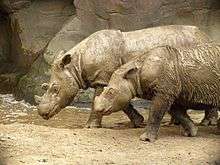 |
Sabah, Sarawak and Peninsular Malaysia, Kalimantan and Sumatra, Indonesia | < 100 |
|
| Diomedea amsterdamensis | Amsterdam albatross | Bird |  |
Breeds on Plateuau des Tourbières, Amsterdam Island, Indian Ocean. | 100 mature individuals |
|
| Dioscorea strydomiana | Wild yam | Plant | Oshoek area, Mpumalanga, South Africa | 200 |
| |
| Diospyros katendei | Plant (tree) | Kasyoha-Kitomi Forest Reserve, Uganda | 20 individuals in a single population |
| ||
| Dipterocarpus lamellatus | Plant (tree) | Siangau Forest Reserve, Sabah, Malaysia | 12 individuals |
| ||
| Discoglossus nigriventer | Hula painted frog | Amphibian | Hula Valley, Israel | Unknown |
| |
| Dombeya mauritiana | Plant | Mauritius | Unknown |
| ||
| Elaeocarpus bojeri | Bois Dentelle | Plant (tree) | Grand Bassin, Mauritius | < 10 individuals |
| |
| Eleutherodactylus glandulifer | La Hotte glanded frog | Amphibian | Massif de la Hotte, Haiti | Unknown |
| |
| Eleutherodactylus thorecetes | Macaya breast-spot frog | Amphibian | Formon and Macaya peaks, Masif de la Hotte, Haiti | Unknown |
| |
| Eriosyce chilensis | Chilenito (cactus) | Plant | Pta Molles and Pichidungui, Chile | < 500 individuals |
| |
| Erythrina schliebenii | Coral tree | Plant | Namatimbili-Ngarama Forest, Tanzania | < 50 individuals |
| |
| Euphorbia tanaensis | Plant (tree) | Witu Forest Reserve, Kenya | 4 mature individuals |
| ||
| Eurynorhyncus pygmeus | Spoon-billed sandpiper | Bird | 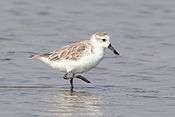 |
Breeds in Russia, migrates along the East Asian-Australasian Flyway to wintering grounds in India, Bangladesh and Myanmar | 100 breeding pairs |
|
| Ficus katendei | Plant | Kasyoha-Kitomi Forest Reserve, Ishasha River, Uganda | < 50 mature individuals |
| ||
| Geronticus eremita | Northern bald ibis | Bird |  |
Breeds in Morocco, Turkey and Syria. Syrian population winters in
central Ethiopia. |
about 3000 individuals |
|
| Gigasiphon macrosiphon | Plant (flower) | Kaya Muhaka, Gongoni and Mrima Forest Reserves, Kenya, Amani Nature Reserve, West Kilombero Scarp Forest Reserve, and Kihansi Gorge, Tanzania | 33 |
| ||
| Gocea ohridana | Mollusc | Lake Ohrid, Macedonia | Unknown |
| ||
| Heleophryne rosei | Table mountain ghost frog | Amphibian | Table Mountain, Western Cape Province, South Africa | Unknown |
| |
| Hemicycla paeteliana | Mollusc (land snail) | Jandia peninsula, Fuerteventura, Canary Islands | Unknown |
| ||
| Heteromirafa sidamoensis | Liben lark | Bird | Liben Plains, southern Ethiopia | 90–256 |
| |
| Hibiscadelphus woodii | Plant (tree) | Kalalau Valley, Hawaii | Unknown |
| ||
| Hucho perryi | Sakhalin taimen | Fish |  |
Russian and Japanese rivers, Pacific Ocean between Russia and Japan | Unknown |
|
| Johora singaporensis | Singapore freshwater crab | Crustacean | Bukit Timah Nature Reserve and streamlet near Bukit Batok, Singapore | Unknown |
| |
| Lathyrus belinensis | Belin vetchling | Plant | Outskirts of Belin village, Antalya, Turkey | < 1,000 |
| |
| Leiopelma archeyi | Archey’s frog | Amphibian | 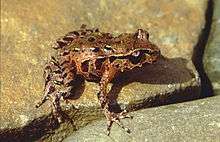 |
Coromandel peninsula and Whareorino Forest, New Zealand | Unknown |
|
| Lithobates sevosus | Dusky gopher frog | Amphibian | Harrison County, Mississippi, USA | 60–100 |
| |
| Lophura edwardsi | Edwards’s pheasant | Bird | Quang Binh, Quang Tri and Thua Thien-Hue, Viet Nam | Unknown |
| |
| Magnolia wolfii | Plant (tree) | Risaralda, Colombia | 3 |
| ||
| Margaritifera marocana | Mollusc | Oued Denna, Oued Abid and Oued Beth, Morocco | < 250 |
| ||
| Moominia willii | Mollusc (snail) | Silhouette Island, Seychelles | < 500 |
| ||
| Natalus primus | Cuban greater funnel eared bat | Mammal (bat) | Cueva La Barca, Isle of Pines, Cuba | < 100 |
| |
| Nepenthes attenboroughii | Attenborough’s pitcher plant | Plant |  |
Mount Victoria, Palawan, Philippines | Unknown |
|
| Nomascus hainanus | Hainan black crested gibbon | Mammal (primate) | 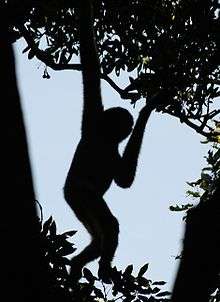 |
Hainan Island, China | 20 |
|
| Neurergus kaiseri | Luristan newt | Amphibian | 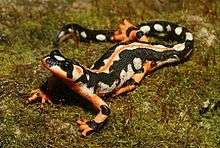 |
Zagros Mountains, Lorestan, Iran | < 1,000 |
|
| Oreocnemis phoenix | Mulanje red damsel | Insect (damselfly) | Mulanje Plateau, Malawi | Unknown |
| |
| Pangasius sanitwongsei | Pangasid catfish | Fish | 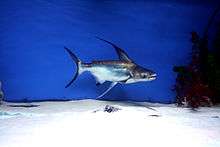 |
Chao Phraya and Mekong basins in Cambodia, China, Lao PDR, Thailand and Viet Nam | Unknown |
|
| Parides burchellanus | Insect (butterfly) | Cerrado, Brazil | < 100 |
| ||
| Phocoena sinus | Vaquita | Mammal (porpoise) | Northern Gulf of California, Mexico | 12[7] |
| |
| Picea neoveitchii | Type of spruce tree | Plant (tree) | Qinling Range, China | Unknown |
| |
| Pinus squamata | Qiaojia pine | Plant (tree) | Qiaojia, Yunnan, China | < 25 |
| |
| Poecilotheria metallica | Gooty tarantula Metallic tarantula Peacock tarantula Salepurgu |
Spider | Nandyal and Giddalur, Andhra Pradesh, India | Unknown |
| |
| Pomarea whitneyi | Fatuhiva monarch | Bird | Fatu Hiva, Marquesas Islands, French Polynesia | 50 |
| |
| Pristis pristis | Common sawfish | Fish |  |
Coastal tropical and subtropical waters of Indo-Pacific and Atlantic Oceans. Currently largely restricted to northern Australia | Unknown |
|
| Prolemur simus | Greater bamboo lemur | Mammal (primate) | 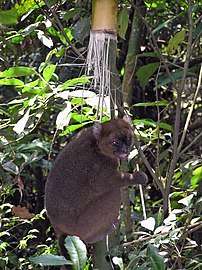 |
Southeastern and southcentral rainforests of Madagascar | 500 |
|
| Propithecus candidus | Silky sifaka | Mammal (primate) |  |
Maroantsetra to Andapa basin, and Marojeju Massif, Madagascar | 100–1,000 |
|
| Psammobates geometricus | Geometric tortoise | Reptile |  |
Western Cape Province, South Africa | Unknown |
|
| Pseudoryx nghetinhensis | Saola | Mammal | Annamite mountains, on the Viet Nam - PDR Laos border | Unknown |
| |
| Psiadia cataractae | Plant | Mauritius | Unknown |
| ||
| Psorodonotus ebneri | Beydaglari bush-cricket | Insect | Beydaglari range, Antalaya, Turkey | Unknown |
| |
| Rafetus swinhoei | Red River giant softshell turtle | Reptile | 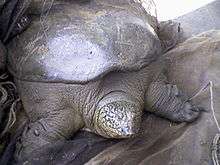 |
Hoan Kiem Lake and Dong Mo Lake, Viet Nam, and Suzhou Zoo, China | 4 |
|
| Rhinoceros sondaicus | Javan rhino | Mammal (rhino) |  |
Ujung Kulon National Park, Java, Indonesia | < 100 |
|
| Rhinopithecus avunculus | Tonkin snub-nosed monkey | Mammal (primate) | Northeastern Vietnam | < 200 |
| |
| Rhizanthella gardneri | West Australian underground orchid | Plant (orchid) | 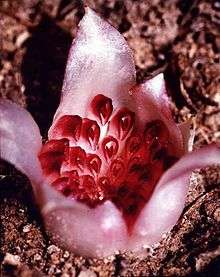 |
Western Australia, Australia | < 100 |
|
| Rhynchocyon spp. | Boni giant sengi | Mammal (shrew) | Boni-Dodori Forest, Lamu area, Kenya | Unknown |
| |
| Risiocnemis seidenschwarzi | Cebu frill-wing | Insect (damselfly) | Rivulet beside the Kawasan River, Cebu, Philippines | Unknown |
| |
| Rosa arabica | Plant | St Katherine Mountains, Egypt | Unknown, 10 sub-populations |
| ||
| Salanoia durrelli | Durrell’s vontsira | Mammal (mongoose) |  |
Marshes of Lake Alaotra, Madagascar | Unknown |
|
| Santamartamys rufodorsalis | Red crested tree rat | Mammal (rodent) | Sierra Nevada de Santa Marta, Colombia | Unknown |
| |
| Scaturiginichthys vermeilipinnis | Red-finned blue-eye | Fish | Edgbaston Station, central western Queensland, Australia | 2,000–4,000 |
| |
| Squatina squatina | Angel shark | Fish |  |
Canary Islands | Unknown |
|
| Sterna bernsteini | Chinese crested tern | Bird | Breeding in Zhejiang and Fujian, China. Outside breeding season in Indonesia, Malaysia, Philippines, Taiwan, Thailand. | < 50 |
| |
| Syngnathus watermeyeri | Estuarine pipefish | Fish | Kariega Estuary to East Kleinemonde Estuary, Eastern Cape Province, South Africa | Unknown |
| |
| Tahina spectabilis | Suicide palm Dimaka |
Plant | 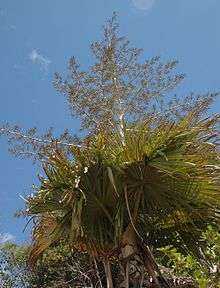 |
Analalava district, north-western Madagascar | 90 |
|
| Telmatobufo bullocki | Bullock’s false toad | Amphibian (frog) | 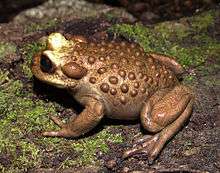 |
Nahuelbuta, Arauco Province, Chile | Unknown |
|
| Tokudaia muenninki | Okinawa spiny rat | Mammal (rodent) | Okinawa Island, Japan | Unknown |
| |
| Trigonostigma somphongsi | Somphongs’s rasbora | Fish | 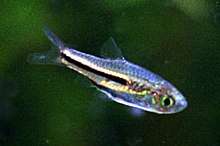 |
Mae Khlong basin, Thailand | Unknown |
|
| Valencia letourneuxi | Fish | Southern Albania and Western Greece | Unknown |
| ||
| Voanioala gerardii | Forest coconut | Plant | Masoala peninsula, Madagascar | < 10 |
| |
| Zaglossus attenboroughi | Attenborough’s echidna | Mammal | Cyclops Mountains, Papua Province, Indonesia | Unknown |
|
References
- "Report lists world's 100 most threatened species, urges action". The Globe and Mail. 11 September 2012. Retrieved 17 September 2012.
- "The 100 most threatened species". ZSL Living Conservation. The Zoological Society of London. Archived from the original on 14 September 2012. Retrieved 16 September 2012.
- Baillie, Jonathan E M; Ellen R Butcher (2012). Priceless or Worthless? (PDF). ZoolFlyway to wintering grounds in Indiaogical Society of London. ISBN 978-0-900881-67-1. Archived from the original (PDF) on 2012-10-21.
- Harvey, Fiona (10 September 2012). "The expendables? World's 100 most endangered species listed". The Guardian. Retrieved 17 September 2012.
- Kew Magazine stated that, "A strong and consistent moral and ethical stance needs to be taken, they (the authors of The List) argue, that all species have a right to exist." Harrison, Christina. "Every species counts". Kew Magazine Blog. Royal Botanic Gardens, Kew. Retrieved 19 September 2012.
- "The Best Argument for Saving Threatened Species That Do Not Benefit Humans". Smithsonian.com. Smithsonian Institution. 12 September 2012. Retrieved 17 September 2012.
- Hoffner, Erik. "Only 12 vaquita porpoises remain, watchdog group reports". Mongabay. Retrieved 14 September 2018.
